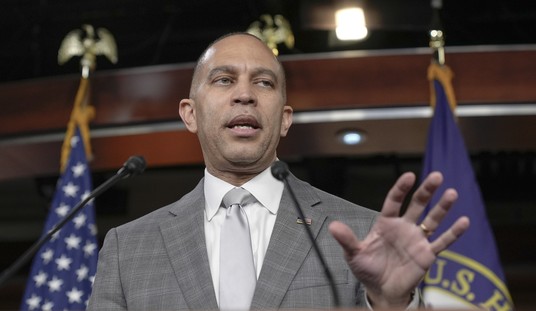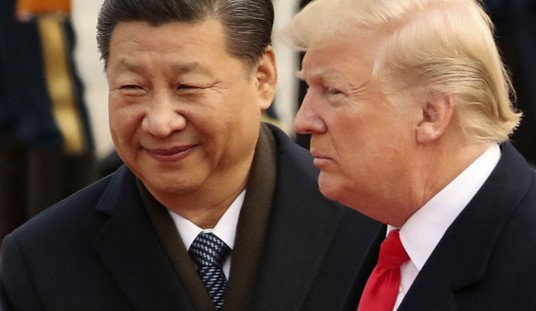I once had a point, or should I say, it once had me ...
One could come up with a number of good arguments against tariffs. Chris Matthews did not choose well among them. Earlier today, the MSNBC commentator complained that American construction companies would lose access to ... Canadian wood? Indeed, Matthews chose this particular import to highlight his opposition to Donald Trump's tariffs, asking, "What is our plan now? We're going to create more wood -- is that it?"
Who wants to tell him?
Chris Matthews on MSNBC:
— Townhall.com (@townhallcom) April 9, 2025
"We get so much of our lumber, our two by fours from from Canada....What are we going to do? Have more lumber made in the United States now?!"
"What is our plan now...? We're going to create more wood. Is that it?!"
"Are we going to make more wood in… pic.twitter.com/cVlvJ6SvEu
Great point! It's not as if lumber grows on trees! [Reads urgent bulletin from home office] Er, wait, I have a correction to make here...
The US does in fact have a robust lumber industry. In 2022 alone, the US exported $43 billion in lumber products globally, according to the World Bank, with Canada being the top importer of American lumber ($11.8 billion). In the same year, though, we imported $72 billion in lumber products, including $28.4 billion from Canada, creating the kind of trade deficits that Trump wants to address through tariff policies. The second-ranking source for lumber imports to the US? China, with $10.4 billion in 2022.
In fact, this is precisely the type of situation in which increased incentives for domestic supply might generate good-paying jobs in the US. The COVID-19 pandemic and the tranches of stimulus checks created a temporary demand bubble for home renovations and construction that sent lumber prices soaring, in large part because supply couldn't scale up to meet demand. The problem wasn't a lack of trees, the National Association of State Foresters explained at the time, but a lack of processing capacity that handicapped the supply chain:
A perfect storm of new home building, remodeling, and DIY projects during the pandemic created unprecedented demand for new lumber. At the same time, due to workforce shortages and restrictions, many sawmills elected to temporarily shut down and many others were forced to decrease production in 2020.[2] These factors, coupled with an existing lack of wood processing infrastructure, compounded by the myriad issues COVID caused for global trade and shipping industries, have put unprecedented stress on the U.S. forest product supply chain.[3]
Private forests in the U.S. provide over 90% of our domestically-produced forest products, and despite a surge in lumber prices, timber sale revenues to these landowners have remained largely the same as they have been for the last 40 years.[4] This is because today’s sky-high timber prices aren’t caused by or related to any shortage of trees.[5] In fact, right now, a glut of 30- to 35-year-old trees (most planted with federal cost-share assistance in the 1980s) stand ready for harvest in the south but aren’t being harvested due to the lack of sufficient wood processing capacity.[6] As a result of the surplus, stumpage prices remain depressed, and forest landowners are required to compete with one another to secure reasonable timber prices.
By applying tariffs, theoretically it might make more sense for American lumber producers to sell in the domestic market. It certainly would incentivize investment in expansion of processing capacity and in long-term plans to increase tree inventories for future sales.
That's the theory. However, the reality is that not all wood has equal value and application. Home construction relies more on the Canadian varieties, apparently, which themselves rely on climate and soil conditions in Canada. That doesn't mean that American varieties couldn't suffice, but the transition would likely take some time, and would depend on the availability and price of American-origin hardwood, not to mention reliability of production.
In the long term, keeping domestic sales more focused on American products with a stable tariff balancing policy would overcome the current preferences and allow for stronger domestic performance. However, that's not the only way to address these imbalanced trade outcomes. Another method to deal with it would be to have a trade agreements that enforces for fair balancing between countries and encourages true reciprocal access to markets. Tariffs might encourage those kinds of agreements and enforcement in the longer run, although we have been getting very mixed messages about whether the Trump administration is even willing to accept such agreements in place of the tariffs, at least until Trump's pause announced this afternoon.
But even in the short run, we could scale up both harvesting and production of suitable American substitutes to meet demand. That would create jobs here in the US and encourage more investment, while fueling the American economy rather than transferring wealth unnecessarily overseas. The truth isn't that we can't supply ourselves, but that we have chosen in most instances not to do so -- which is what Trump wants to reverse.
That doesn't mean the tariffs will succeed if pursued, or that they won't cause economic damage. But if this is the best argument that Matthews and MSNBC can muster against them, then we should give these policies a chance to change the incentives and see whether those will prompt the kind of domestic expansion that Trump envisions.







Join the conversation as a VIP Member